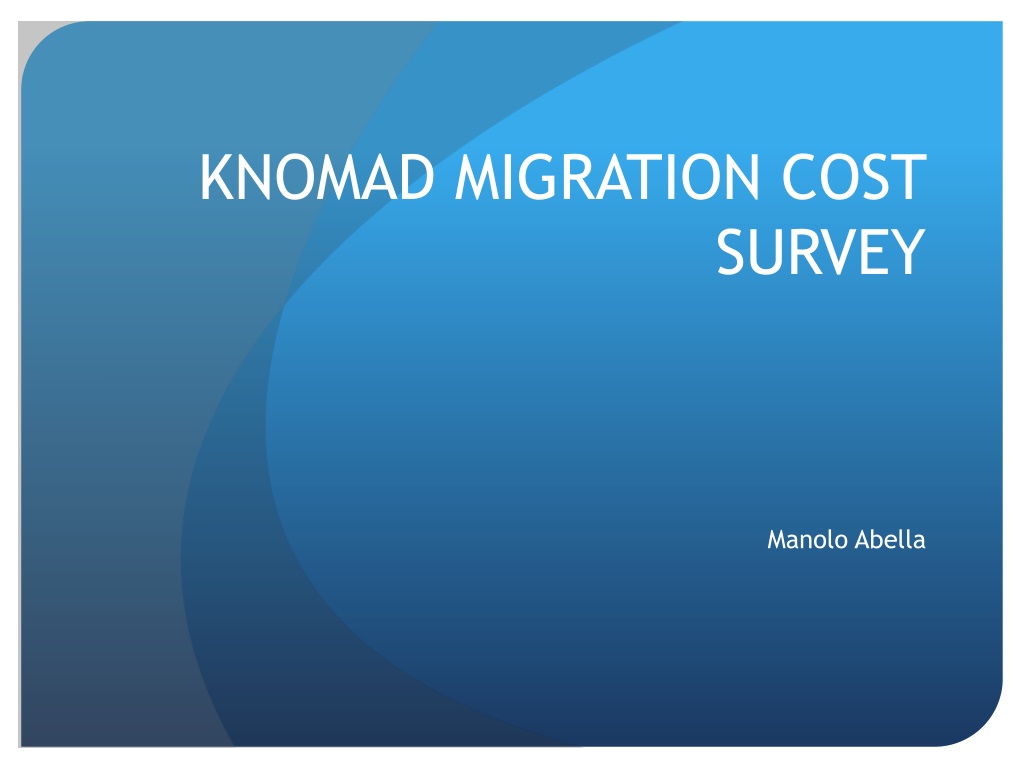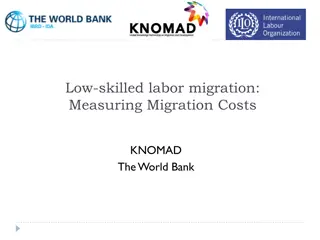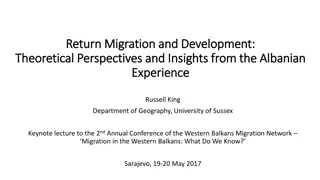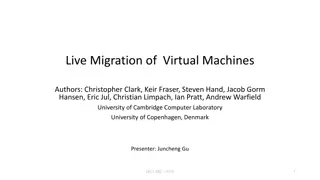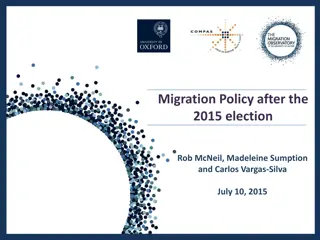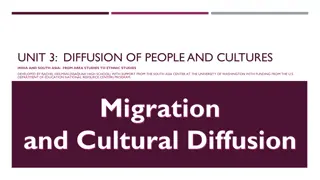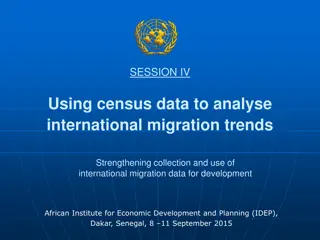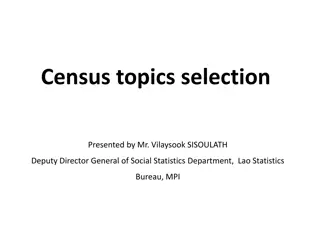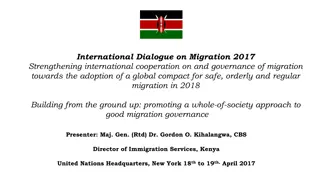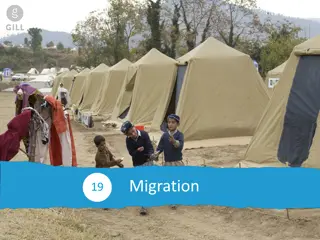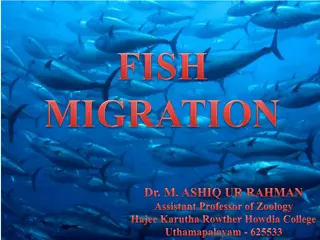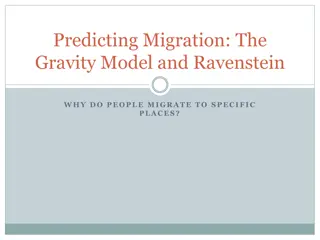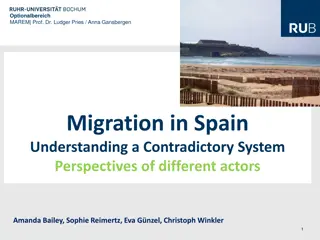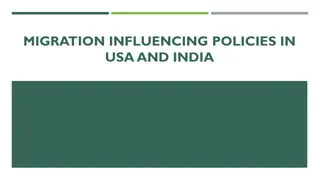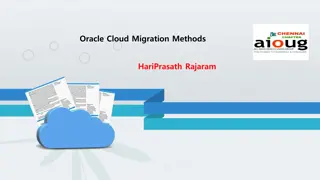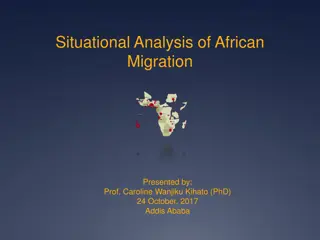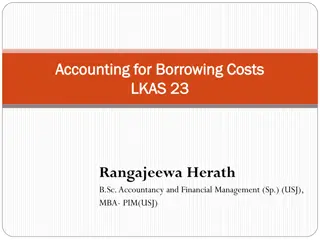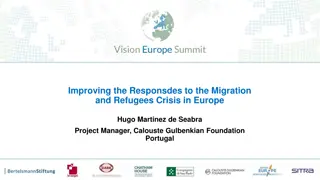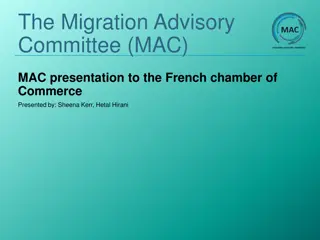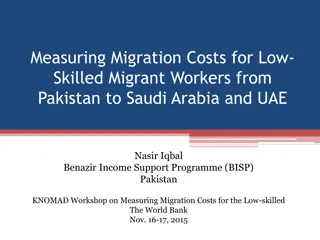Understanding Migration Costs and Policy Interventions
Much anecdotal evidence suggests high and rising migration costs, highlighting the need for comprehensive research to identify areas for policy intervention. This study aims to provide reliable evidence on low-skill workers' actual costs of migration, enable cross-country comparisons, and estimate non-pecuniary costs. Key questions raised include financing migration, employer contributions, social network impact, and policy influences. Considerations for survey methodology, such as sample size and stratification, are crucial for obtaining insightful data.
Download Presentation

Please find below an Image/Link to download the presentation.
The content on the website is provided AS IS for your information and personal use only. It may not be sold, licensed, or shared on other websites without obtaining consent from the author. Download presentation by click this link. If you encounter any issues during the download, it is possible that the publisher has removed the file from their server.
E N D
Presentation Transcript
KNOMAD MIGRATION COST SURVEY Manolo Abella
Background Much anecdotal evidence that migration costs are high and rising attributed to growing wage differentials. Little is known of the value added by recruiters and how their services are priced in the labour market There is a need for better understanding of where economic costs arise and how policy can reduce rents Huge potential benefits that can accrue to migrants and origin as well as host and origin societies from reducing costs
Objectives of study Provide reliable evidence, based on sound research methodology, of how much low-skill workers actually pay to get employed in another country Identify possible areas for policy intervention to reduce costs Enable cross-country, and cross-corridor comparisons of costs that may reveal what difference policies make Provide the basis for estimating non-pecuniary costs such as earnings foregone or worsening conditions of employment
5 KNOMAD surveys Plan of survey Survey methodology Questions for considerations Questionnaire design Sampling Survey implementation in the field Usage
Some key questions raised How did workers find out about jobs? What are the biggest components of migration cost? How did workers finance their migration? Did employers pay for some costs? Does it cost less to migrate when workers got jobs thru social networks? Does experience working abroad make any difference to cost? Do origin country policies impact on cost? Significant differences between countries?
Considerations for survey methodology 7 How much detail do we really need? What responses are we likely to get? Who is the best source of information about migration cost? Size of the sample? Compromises on sample stratification Pilot surveys a first cut at a complex labor market process
QUESTIONNAIRE ISSUES Does the Questionnaire cover all the relevant worker- paid costs that can be obtained thru interviews of migrants? Will respondents remember them? What questions need to be included to shed sufficient light on various issues of interest such as how costs are influenced by conditions in the labour market (S D), policies of destination countries, origin countries, education, experience, sex, age, etc.? Can greater precision and accuracy be obtained thru a re-framing of some questions? Could the Questionnaire be structured better for greater efficiency?
Surveys revealed Worker-paid migration costs can account for anywhere between half a month to 9 months of earnings abroad. Costs vary significantly between migration corridors Very significant differences within corridors, large variance around the mean. Visa cost account for much of the high migration cost to Gulf States. The wage-wedge has a significant impact on migration cost. The effect of other factors like previous experience, age, education, marital status varies from corridor to corridor
Wage wedge related to migration cost 6000 4000 Total migraton costs 2000 0 -2000 -4000 -500 0 500 1000 Wage differentials coef = 2.3294513, (robust) se = .24554619, t = 9.49
13 Bangladesh/ Pakistan high visa fees (visa trading) 3000 (Average cost in constant 2014 US$) 2500 2000 1500 1000 500 0 Bangladesh International transport Passport/ other documents Pakistan
14 India/ Philippines relatively high recruitment agency fees (Average costs in constant 2014 US$) 600 500 400 300 200 100 0 India Philippines Document/compliance costs International transportation Informal payment Domestic transportation Visa Recruitment agency
High variance in what workers paid to recruiters
High visa cost in some corridors (average costs, in constant 2014 US$) 5000 4500 4000 3500 3000 2500 2000 1500 1000 500 0 India Philippines Ethiopia Pakistan Pakistan Qatar Saudi Arabia UAE Passport Visa Other compliance costs Fees paid to recuritment agents Inland transportation International transportation Informal payments
18 Ensure workers migrate through regular channels Ethiopia higher fees paid by irregular migrants 600 500 (Average costs in constant 2014 US$) 400 300 200 100 0 Regular migrants Irregular migrants Document/compliance costs International transportation Informal payment Domestic transportation Visa Recruitment agency
Migration cost in terms of earnings
Do workers with previous work abroad pay less?
Feedback on Q from surveys: Respondents generally able to recall total costs; but for specific cost items estimates have to be drawn from smaller number of responses. For various reasons responses to some questions need to be interpreted with caution. These include : - Possibility of double counting : broker fee reported may include costs other than for recruiter s services - interest paid on loan not easily estimated - costs incurred in previous failed attempts (how far back?) Informal payments (included in brokers fee?)
Very few responded to question on possible use of skill and if they think they can earn more For costs incurred at different points in time need to be dated to allow for proper indexation if costs are converted into one currency.
Need information on when costs incurred as exch rates change
Considerations in sampling Information on reference population Special issues in sampling returnees Locating and accessing respondents Limiting sample to recent migrants Sample size and budget constraints
